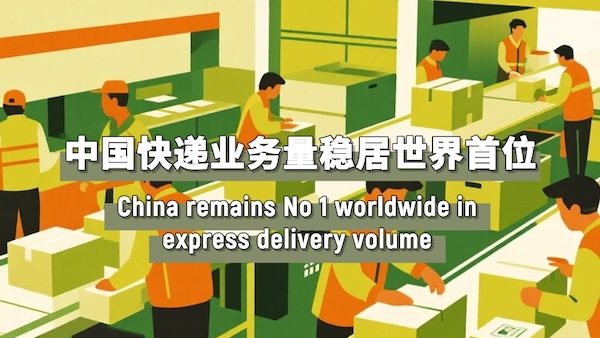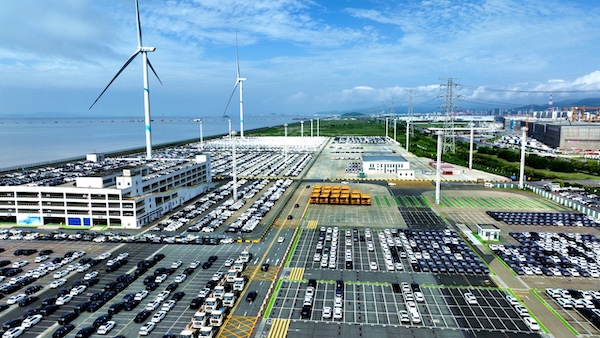China's major ports see strong gains amid rising 'new trio' shipments
Despite global trade headwinds, China's major ports posted strong first-half gains, fueled by booming exports of electric vehicles, lithium batteries, and solar cells.
Data from China's Ministry of Transport shows that Ningbo-Zhoushan Port in east China's Zhejiang province retained its position as the country's top port, handling 713.75 million metric tons of cargo. Tangshan Port and Shanghai Port followed, processing 433.57 million and 425.59 million metric tons, respectively.
A notable trend in China's exports is the rapid rise of the new trio, namely electric vehicles (EVs), lithium batteries, and solar cells. These products have become a key driver in upgrading China's foreign trade structure.
According to customs statistics, in the first half of this year, exports of these new trio products grew 12.7% year-on-year, defying global headwinds and leading China's export growth. Back in 2023, their combined exports reached 1.06 trillion yuan (about $147.7 billion), cementing their role as a new hallmark of China's foreign trade.
The surge in new trio exports has been supported by the continuous improvement of China's port network. For example, ports in Qingdao, Tianjin, Quanzhou, and Zhuhai have launched new direct shipping routes to Latin America, Africa, and Southeast Asia, opening fast tracks for these products to reach global markets.
Ports have long been vital arteries for the prosperity of coastal cities, and China has consistently prioritized their development.
A report on the comprehensive evaluation of world-class ports for 2025, jointly released by China's Ministry of Transport and China Economic Information Service, shows that during the 14th Five-Year Plan period, the country added 379 berths for ships over 10,000 metric tons, bringing the total to 2,971. More than 70% of key coastal ports are now connected by rail, forming several world-class port clusters.
In 2024, Chinese ports averaged a throughput of 38,000 TEUs per hour. The direct berthing rate of container vessels at 10 sample ports reached 89%, while the average anchorage waiting time dropped to 19 hours.
Cutting-edge technologies such as 5G, artificial intelligence, and big data have been widely deployed across Chinese ports, significantly boosting cargo handling efficiency.
Today, China's major coastal ports are integrating deeply with the China-Europe Railway Express and New International Land-Sea Trade Corridor, creating a comprehensive sea-land-air-rail logistics system. This provides foreign trade companies with diversified supply chain solutions.
China's ports are driving a trillion-yuan foreign trade ecosystem, reflecting both the overseas rise of the "new trio" and China's global industrial strategy.
(By Gong Weiwei)

 China Life Tips: Instant tax refunds redouble shopping fun
China Life Tips: Instant tax refunds redouble shopping fun
 China remains No 1 worldwide in express delivery volume
China remains No 1 worldwide in express delivery volume
 Kordyk's journey: From dream to deck
Kordyk's journey: From dream to deck



